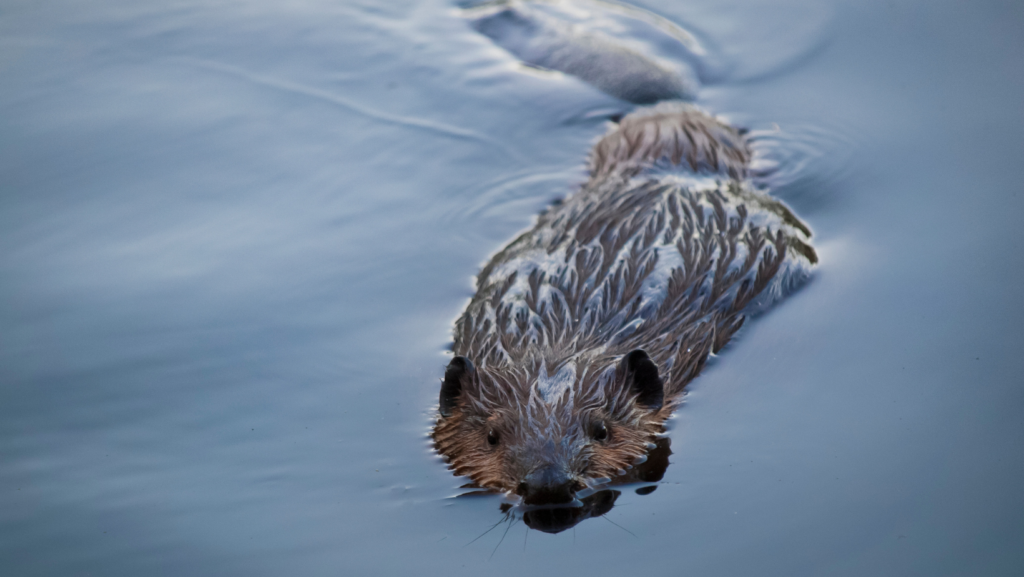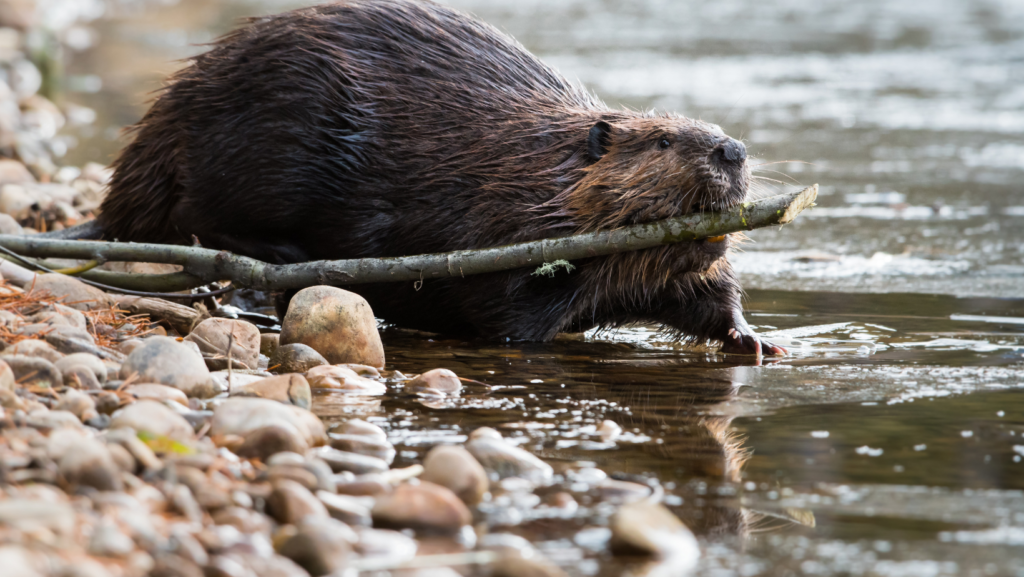Birth:

The life of a beaver begins in the cozy confines of a lodge, a carefully constructed den made of sticks, mud, and vegetation. Beaver kits, as the young ones are called, are usually born in the spring, typically in a litter of two to four. They are born blind and covered in a fine layer of fur, and it doesn’t take long for them to become active within the lodge.
Growing Up:
Beaver kits spend their early days in the safety of the lodge, cared for by their parents. As they grow, they become more adventurous, exploring the surroundings of their watery home. Young beavers, known as yearlings, learn essential skills from their parents, such as building dams and lodges, foraging for food, and recognizing the scent markings that define their territory.
Life:

Beavers are well-adapted to their semi-aquatic lifestyle. They are excellent swimmers, with webbed hind feet and a large, flat tail that acts as a rudder. The iconic incisors, continuously growing throughout their lives, are used for cutting down trees and building their intricate dams and lodges. Beavers are primarily nocturnal, which helps them avoid predators and conduct their construction and foraging activities in relative safety.
Food:
A significant part of a beaver’s life revolves around food. They are herbivores, consuming a diet of bark, leaves, aquatic plants, and roots. Beavers are particularly known for their ability to fell trees with their powerful incisors, which they use both for building and for accessing the nutrient-rich inner bark. In winter, when access to fresh vegetation is limited, they rely on stored food in their underwater caches.
Reproductive:
Reproduction is a vital aspect of a beaver’s life. Beavers typically reach sexual maturity at around two years of age. Mating occurs in the winter months, with the female giving birth to a litter of kits in the spring after a gestation period of about three months. Beaver families are known to be close-knit, with both parents actively participating in raising and protecting their offspring.
Death:

While beavers face threats from predators such as wolves, bears, and coyotes, they are also susceptible to disease and habitat loss. Despite these challenges, many beavers live relatively long lives, often reaching six to eight years in the wild. Their death may result from natural causes, predation, or environmental factors.
In death, a beaver’s contribution to its ecosystem persists. The lodges and dams they construct provide habitat for other species, and their activities can shape the landscape by creating wetlands that support diverse plant and animal life. Even in their passing, beavers leave a lasting impact on the natural world they inhabit.

